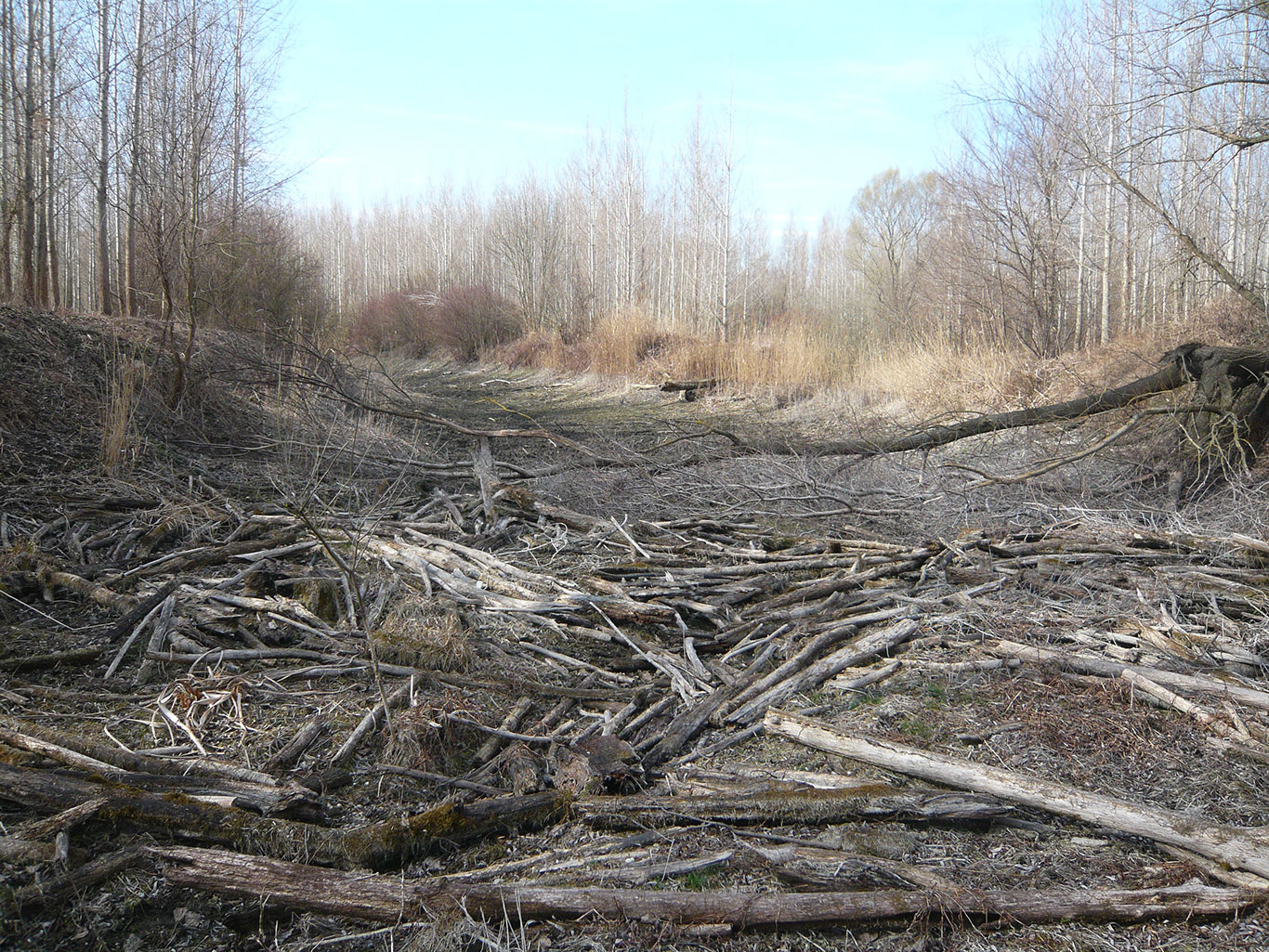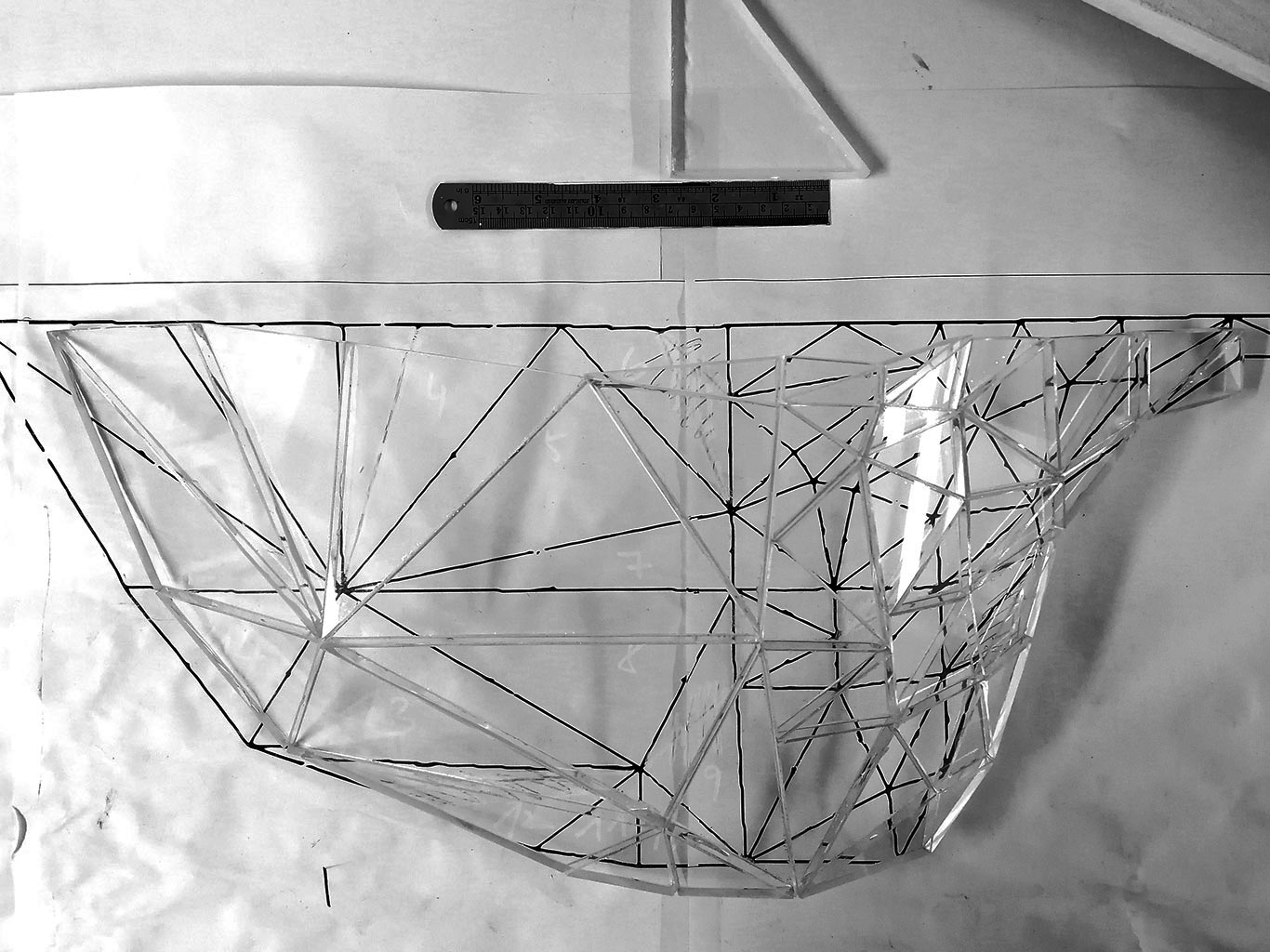- There is No Landscape
- On Silhouettes and Lines, Cross-sections and Rivers, Data Points and Wireframes
- Building Geometry from Topographical Data

Landscapes: In contrast to topographical maps which are schematic renderings of spatial information, landscapes are cacophonic environments, the noisy ground of everyday life, memory and imagination. The Gabčikovo–Dam (built between 1977 and 1992) was built to control these mundane flows.

Dried riverbed near Gabčíkovo, Slovak Republic, 2016-17.

Reduction of Forms: Landscape transformation technologies use topographical visualizations (e.g. topographic maps, contour lines, elevation profiles, cross-sections and technical drawings) to study natural landscapes. These visualization methods reduce the elements of a complex environment to calculable forms and measurements.

Process photo, Unterer Hirschgang, Akademie Schloss Solitude. image: Jana Hochdorfer, 2022.

Photogrammetry is one of the technologies that support the extractive logic that compels the land to be transformed. In order to understand relations between objects in environments, photogrammetry works from photographs taken around objects and builds point clouds, by connecting those points a wireframe or topology is created. This model, however, was not created from photographs but from different cross-section drawings depicting the topographical features of the landscape around the Gabčíkovo-Nagymaros Dam.
The 3D model is the output of the photogrammetry process. It is also evidence that photogrammetry has failed to identify an ‘object’ on the imported images, instead, it created one.

The glass model during production, 2022.